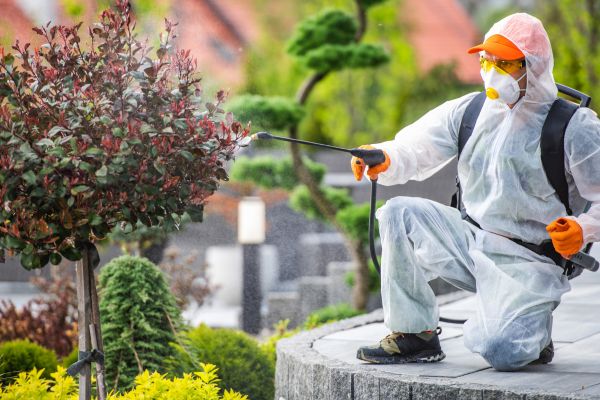Gardening is a deeply rewarding pursuit, offering not just beautiful greenery or fresh produce, but a chance to connect with nature. However, every gardener—novice or seasoned—knows the frustration that arises when pests invade a carefully cultivated space. The immediate temptation might be to reach for chemical pesticides, but there’s a growing movement favoring natural pest prevention methods. These eco-friendly alternatives not only protect your plants but also preserve the integrity of the surrounding environment and your health.
Understanding the Importance of Natural Pest Prevention Methods
Conventional pesticides, while effective in eliminating pests, come with a heavy cost. They often leave chemical residues that can be harmful to pets, children, and beneficial insects. Furthermore, over time, many pests develop resistance to these chemicals, rendering them ineffective. In contrast, natural pest prevention methods offer a sustainable solution that works in harmony with the environment. These methods focus on creating a balanced ecosystem where pests are naturally deterred or controlled.
Natural solutions emphasize prevention rather than cure. Instead of eradicating pests after they’ve taken hold, these techniques work to ensure pests never gain a foothold in the first place. This proactive approach leads to healthier plants, reduced maintenance, and a more resilient garden over time.
Building a Healthy Garden Ecosystem
At the heart of all natural pest prevention methods is the concept of a thriving ecosystem. A healthy garden is one where plants are strong and able to resist minor pest attacks on their own. Soil health plays a pivotal role in this. When your soil is rich in nutrients and teeming with microbial life, your plants grow robustly, making them less attractive to pests.
Encouraging biodiversity is another cornerstone. Gardens that host a variety of plants naturally attract beneficial insects like ladybugs, lacewings, and predatory wasps, which feast on common pests. Birds and frogs also play a vital role, acting as natural pest control agents. When your garden is designed to invite and support these helpful creatures, it reduces the likelihood of pest outbreaks.
The Role of Companion Planting
One of the most fascinating and effective natural pest prevention methods is companion planting. This age-old technique involves strategically planting certain crops together to repel pests or boost each other’s growth. For example, marigolds are known to deter nematodes and aphids, while basil planted near tomatoes can help ward off whiteflies. By understanding which plants support each other, gardeners can craft a landscape that naturally resists pests.
Companion planting not only deters insects but also contributes to soil enrichment and resource optimization. Some plants release substances from their roots that repel insects, while others produce strong scents that confuse or discourage pests from settling in. The result is a synergistic garden environment that thrives without the need for synthetic chemicals.
Natural Repellents and Barriers
Creating physical and scent-based barriers is another effective strategy within the realm of natural pest prevention methods. Homemade sprays using garlic, chili, neem oil, or soap can act as potent deterrents when applied to foliage. These natural solutions confuse or repel pests without harming the plants or beneficial insects.
Row covers made of light fabric can prevent insects from accessing tender crops while allowing sunlight and water through. Similarly, crushed eggshells or diatomaceous earth sprinkled around plant bases can deter slugs and other ground-dwelling invaders. These methods serve as excellent first lines of defense, especially when dealing with small infestations or seasonal pest migrations.
Encouraging Natural Predators
Nature has its own pest control mechanisms, and inviting these natural predators into your garden is one of the smartest natural pest prevention methods available. Birds such as wrens and sparrows feed on caterpillars and beetles, while frogs and toads consume a wide range of garden pests, including mosquitoes and flies.
Creating habitats that attract these creatures—such as birdhouses, small ponds, or piles of rocks—can enhance your garden’s defensive line. Once they feel at home, these predators will patrol your garden, keeping pest populations in check with minimal effort from your side. The key lies in fostering a hospitable environment that supports a wide variety of beneficial wildlife.
Crop Rotation and Seasonal Planning
Many pests are specialists, targeting specific crops. When the same plants are grown in the same location year after year, pests begin to build a presence in that area. This is where crop rotation comes in—a simple yet powerful technique to break the pest cycle.
By rotating your crops each season and avoiding planting the same family of vegetables in the same plot consecutively, you disrupt pest breeding patterns. Over time, this weakens their populations, making your garden less vulnerable. Integrating this practice with your seasonal planting schedule ensures that your soil remains fertile and that pests are kept at bay without needing harsh treatments.
Maintaining Garden Hygiene and Vigilance
Cleanliness is often overlooked but plays a vital role in natural pest prevention methods. Removing dead leaves, fallen fruit, and decaying plant matter helps eliminate breeding grounds for insects and fungal spores. Regularly inspecting your plants for signs of infestation—such as curled leaves, holes, or discoloration—allows you to act quickly before a minor problem escalates.
Proper watering and spacing are also essential. Overcrowded plants are more prone to disease and pest attacks, as air circulation is reduced. Ensuring that each plant has adequate space and is watered at the roots (rather than overhead) supports stronger immunity and reduces the likelihood of pest-related issues.
Choosing Resistant Varieties and Organic Seeds
Plant breeders have developed many pest-resistant plant varieties that naturally fend off certain insects. By selecting these when planning your garden, you give your plants a head start in the battle against pests. Organic seeds, often more robust than their treated counterparts, also adapt better to natural growing conditions and local pest pressures.
While resistant varieties aren’t foolproof, they offer an extra layer of protection and are particularly useful in regions with specific recurring pest issues. When paired with the other natural pest prevention methods mentioned, they contribute to a garden that thrives with minimal intervention.
Conclusion: Embracing a Sustainable Gardening Philosophy
Incorporating natural pest prevention methods into your gardening routine is more than just a tactic—it’s a mindset. It requires patience, observation, and a willingness to work in tandem with nature rather than against it. The rewards are abundant: healthier plants, a more vibrant ecosystem, and peace of mind knowing your garden is free from harmful chemicals.
By focusing on prevention, balance, and biodiversity, gardeners can create sanctuaries that are not only beautiful but also resilient. Whether you’re growing vegetables for your family or cultivating a serene green escape, adopting natural pest prevention methods ensures that your efforts yield both bounty and harmony.



